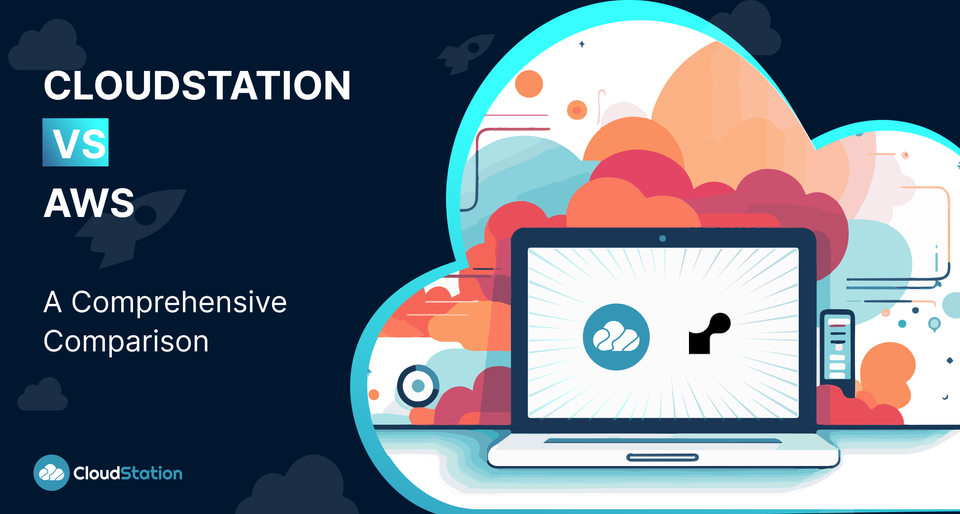CloudStation vs. Render

Introduction
Choosing the right platform for deploying web applications is crucial for the success of your project. This guide explores the key differences between CloudStation and Render, two popular platforms for web deployment. Understanding their core features will help you make an informed decision.
Key Differences
Deployment Focus
- CloudStation: CloudStation excels in full-stack deployment, supporting frontend, backend, databases, and microservices. This makes it suitable for complex projects requiring multiple layers of functionality.
- Render: Render primarily focuses on providing managed container deployments, static sites, cron jobs, and background workers. It is particularly appealing for developers who like the flexibility of Kubernetes but without the operational burden of managing the infrastructure.
Database Support
- CloudStation: Offers built-in database support including Managed MySQL, Managed PostgreSQL, Managed Redis®, Managed MongoDB, Managed MariaDB, and Managed Clickhouse. This integrated approach helps in reducing dependency on third-party services.
- Render: Provides managed databases like Managed PostgreSQL and Managed Redis®. These come with features such as automated backups, replicas, and Point-in-Time Recovery, but other databases require third-party integrations.
Microservices Architecture
- CloudStation: Supports native Docker, monorepos, and independent service deployments. This allows for sophisticated backend logic and microservices architecture.
- Render: Uses a container-based structure that is conducive to microservices, although it lacks native support for Docker or monorepo handling.
Persistent Storage
- CloudStation: Includes persistent storage volumes, making it suitable for stateful applications that require data retention.
- Render: Operates on a somewhat stateless architecture but offers Block Storage as an additional managed service.
Pricing Structure
- CloudStation: Utilizes a pay-as-you-go model combined with a base subscription fee, allowing for flexible and scalable pricing based on usage. This is particularly beneficial for projects with fluctuating resource demands.
- Render: Uses a mixed billing model where you subscribe to a specific plan and pay for the resources you consume every month. It also offers a generous free tier for smaller projects.
Example Pricing Comparison
| Configuration | CloudStation Cost | Render Cost |
|---|---|---|
| VM Small | $17.98 / mo | $25.00 / mo |
| VM Medium | $95.88 / mo | $175.00 / mo |
| VM Large | $191.76 / mo | $450.00 / mo |
| Block Storage | $25.00 / mo | $25.00 / mo |
| Managed PostgreSQL | $60.44 / mo | $95.00 / mo |
| Managed Redis® | $17.98 / mo | $32.00 / mo |
Horizontal Scaling
- CloudStation: Offers horizontal scaling across all plans, making it easier to handle increased loads.
- Render: Provides excellent auto-scaling features, but the associated costs can be higher depending on the plan and usage.
Global Deployments
- CloudStation: Supports deployments in multiple global locations, optimizing latency and performance for users worldwide.
- Render: Offers data center locations in Germany (Frankfurt), Singapore, and two in the United States (Ohio and Oregon).
Private Network and Service Discovery
- CloudStation: Includes built-in service discovery and encrypted inter-service communications.
- Render: Offers similar features but may involve additional costs or setup complexity for custom networking requirements.
Autohealing
- CloudStation: Provides automatic health checks and respawning of unresponsive applications to ensure minimal downtime.
- Render: Implements auto-restarting of containers if they fail, but does not offer as thorough health checks as CloudStation.
Multicloud Support
- CloudStation: Cloud-agnostic, providing a consistent experience across different cloud providers. This flexibility can be valuable for avoiding vendor lock-in.
- Render: Relies on its own infrastructure, more specifically designed for AWS, but does not offer multicloud support.
Data Residency and Compliance
- CloudStation: Supports multi-region deployments to meet various data residency and compliance requirements.
- Render: Also committed to data residency and compliance, but with fewer deployment options compared to CloudStation.
Conclusion
Your choice between CloudStation and Render should align with your project's specific requirements. CloudStation is ideal for full-stack development with integrated database management and microservices. In contrast, Render offers a simplified, user-friendly experience for quick deployments, especially for container-based applications.
Consider your project scale, deployment needs, and feature requirements when making your decision.
FAQs
- What are the cost-saving benefits of using Render over CloudStation?
- Render offers a generous free tier which can be particularly cost-effective for smaller projects or developers just starting out.
- How does the performance of small VMs compare between CloudStation and Render?
- CloudStation generally offers more cost-effective small VM options, especially when utilizing the pay-as-you-go model for fluctuating workloads.
- What are the primary advantages of CloudStation in terms of managed services?
- CloudStation provides a broader selection of managed services including a wider variety of databases and persistent storage options, making it suitable for more complex, full-stack applications.
